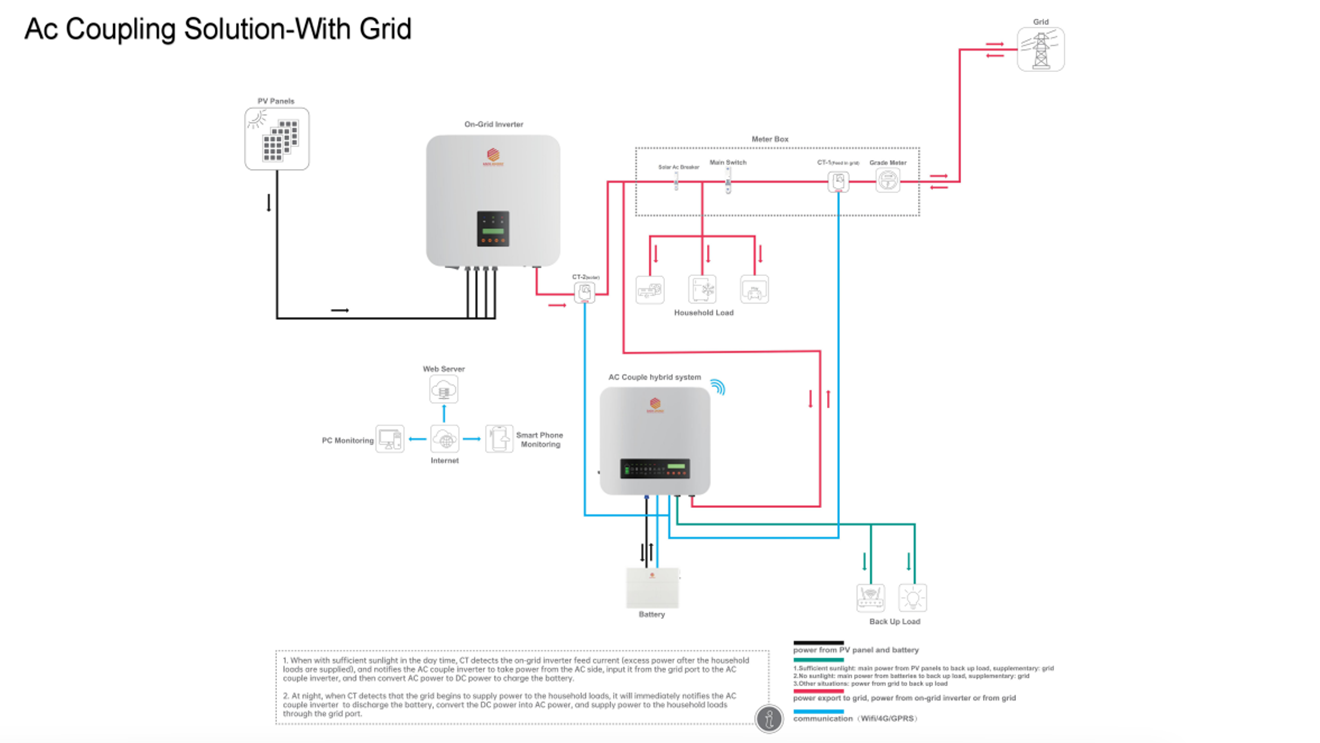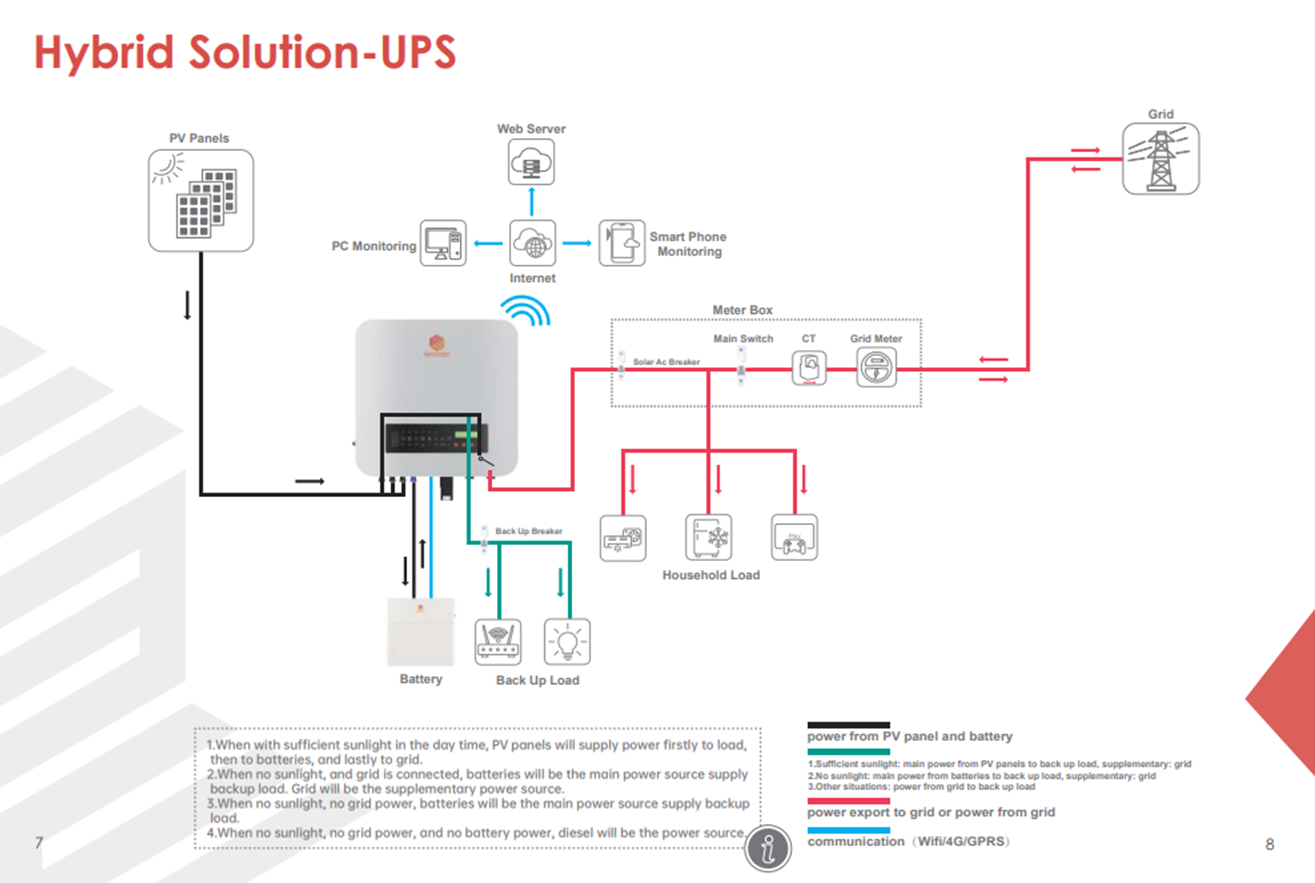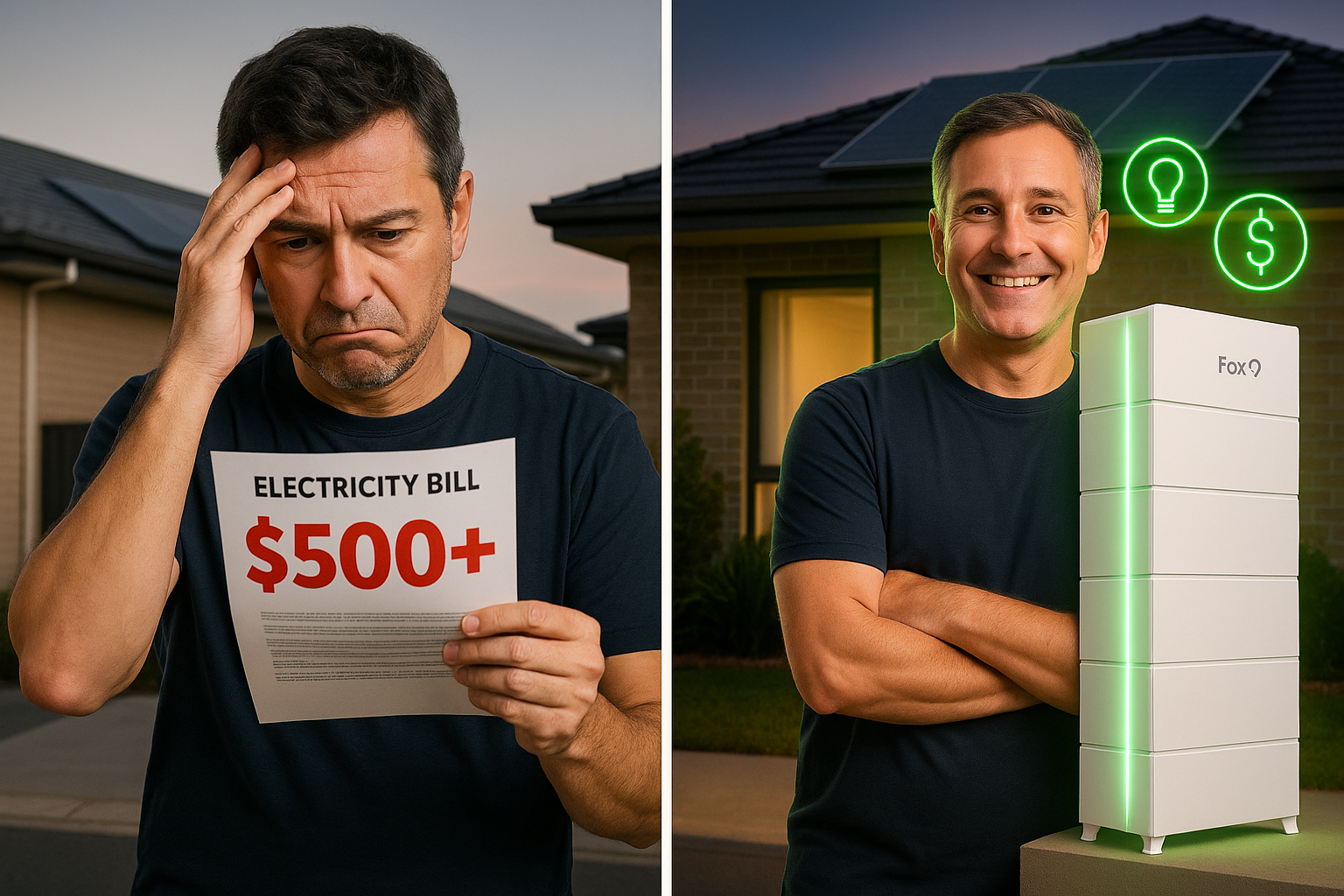Adding a Battery to Your Existing Solar Panels: DC vs. AC Coupling – Pros and Cons
August 6, 2025
Let’s break down the two options if you already have solar panels and are considering installing a battery storage system.
🔌 Option 1: Keep Your Existing Grid-Tied Inverter (AC Coupling)

In this setup, your system remains AC-coupled:
- The grid-tied inverter converts PV electricity into AC,
- The energy flows into your home for immediate use,
- Any excess AC is then sent to the hybrid inverter, which converts it back into DC to charge the battery,
- At night, the battery discharges to power household loads.
✅ Pros:
- No need to remove your existing inverter
- Easier installation
- Saves about AUD 500 in installation costs
❌ Cons:
- Lower efficiency due to multiple energy conversions, with around 5–10% energy loss
- During a grid outage, the grid-tied inverter shuts down, so only the battery powers the backup loads. Once the battery is drained, the system stops entirely—no PV generation or charging.
⚡ Option 2: Remove Grid-Tied Inverter and Connect PV Directly to Storage Inverter (DC Coupling)

This approach is called DC-coupling:
- The PV panels connect directly to the hybrid storage inverter,
- Energy is supplied to loads, and any excess DC power goes straight to the battery (no double conversion),
- In the event of a grid outage, the PV continues to generate, the battery continues to charge and discharge, and backup loads stay powered—a true off-grid-capable system.
✅ Pros:
- Full backup capability during outages: PV, battery, and loads keep running
- High overall efficiency: DC-to-DC charging without conversion losses, up to 98% efficiency
❌ Cons:
- If the existing PV wiring is too short or poorly routed, the installer may need to rewire and reconnect, adding around AUD 500 to installation costs
❓So… DC Couple or AC Couple?
It comes down to your priorities:
- Want a quicker install and lower upfront cost? → AC couple
- Want higher efficiency and real backup functionality? → DC couple
Which one fits your home better?





